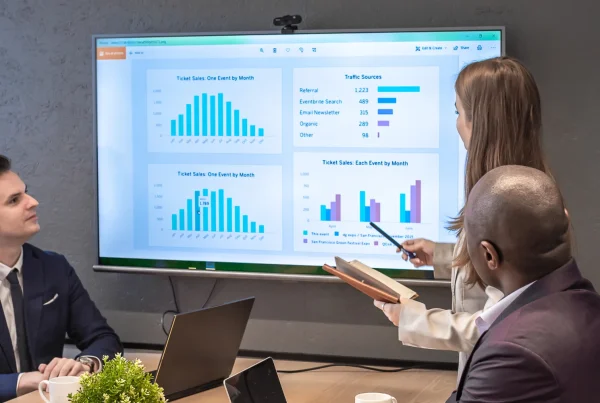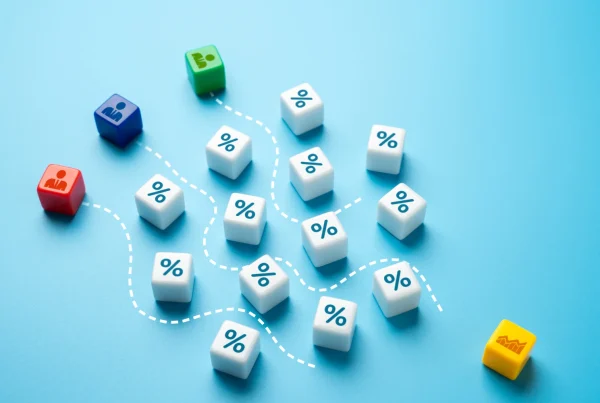Demand planning is undergoing a massive shift in the supply chain. Businesses must adapt their planning strategies to stay competitive. Fortunately, advanced technology solutions are now capable of streamlining demand forecasting and planning processes, offering greater accuracy and efficiency.
In this article, we explore the top 10 technologies that are transforming demand planning. From artificial intelligence to integrated business planning software, let’s consider the details and discover how you can improve your strategy.
What is Demand Planning and Forecasting?
Demand planning is a crucial component of supply chain management that involves predicting and managing future demand for products or services. The process helps businesses make informed decisions about production, inventory, and resource allocation. This proactive approach not only helps maintain optimal inventory levels but also stays ahead of market fluctuations and customer expectations.
In short, demand forecasting and planning are essential for businesses to ensure they have the right products in the right quantities at the right time. However, there is a distinct difference between the two processes:
- Demand planning involves a holistic analysis of historical data, market trends, and customer behavior to predict future demand.
- Demand forecasting is a specific technique within demand planning that uses statistical models and machine learning algorithms to generate highly accurate demand forecasts.
By combining these two approaches, businesses can create more accurate forecasts that inform important decisions year-round, ultimately leading to better alignment with market trends.
Demand Planning Technologies for Businesses
There are several different types of demand planning software available today, each one with its own unique benefits and outcomes. Here are a few of the most popular options to consider.
1. Artificial Intelligence (AI) and Machine Learning (ML) in Demand Planning
AI and ML technologies are two significant technologies that are changing demand planning. Using algorithms to analyze data patterns, they improve forecast accuracy and automate routine tasks, freeing planners to focus on strategy. These technologies make more accurate predictions with new data and are crucial for long-term planning.
Artificial intelligence and machine learning also spot connections between data sources. For example, they can connect seasonal patterns with trending product sales. This lets businesses adjust their inventory before expected seasonal changes to satisfy customers and prevent stock issues. With its predictive power, businesses remain agile, ensuring inventory levels match upcoming demand accurately.
2. Big Data Analytics for Enhanced Demand Forecasting
Big data analytics enhances demand forecasting by analyzing information from multiple sources. It provides a detailed view of market conditions and consumer behavior, leading to more accurate predictions and refined strategies.
Leveraging big data helps companies process unstructured information such as social media comments and customer reviews. This reveals consumer opinions and new trends, allowing businesses to adjust products and marketing quickly, often before competitors.
3. Cloud-Based Demand Planning Software for Agility
Cloud-based demand planning software changes how businesses forecast demand. It enables real-time data sharing and teamwork across locations so that you can quickly update plans to match market or supply chain changes.
Cloud platforms also scale alongside your business. The technology equips you to add more demand planning power as needed. Additionally, you can easily include AI and big data analytics, improving how accurate your forecasts are and boosting your overall efficiency.
4. Internet of Things (IoT) for Real-Time Demand Sensing
Internet of Things (IoT) technology enhances demand planning and forecasting by providing real-time data from connected devices throughout the supply chain. IoT sensors collect information on inventory levels, product usage, and consumer behavior.
This granular, up-to-date data allows businesses to:
- Monitor stock levels continuously
- Track product movement and consumption patterns
- Identify trends and fluctuations in demand quickly
- Automate inventory replenishment
- Improve forecast accuracy with more timely inputs
- Adjust production and distribution plans rapidly
Companies use IoT data to create more precise demand forecasts, optimize inventory management, reduce stockouts and overstock situations, and respond to market changes.
5. Advanced Analytics Dashboards for Demand Planning Visibility
Advanced analytics dashboards simplify complex data, aiding swift decisions. They display crucial metrics such as KPIs, trends, and future demand. This grants demand planners comprehensive insight. Early problem detection and plan adjustments prevent small issues from escalating.
Moreover, these dashboards nurture a culture centered on data, making necessary insights both accessible and clear. This approach boosts teamwork across all departments and aligns everyone’s efforts with the demand planning strategy. This unity drives the entire business towards shared objectives, enhancing overall results.
6. Simulation and Scenario Planning Tools for Strategic Demand Planning
Simulation and scenario planning tools let you test future scenarios. They show how these scenarios might affect demand and supply chain operations. This is key for strategic planning because it allows you to plan for various outcomes and create backup plans.
These tools also foster innovation, providing a risk-free zone to try out new ideas. This includes launching products and entering new markets. Seeing how these ideas might impact demand helps you refine your strategies. Furthermore, it makes sure that new strategies are well-thought-out and enable success.
7. Collaborative Planning, Forecasting, and Replenishment (CPFR) for Demand Accuracy
CPFR (Collaborative Planning, Forecasting, and Replenishment) tools enhance supply chain efficiency by facilitating data sharing between manufacturers, suppliers, and retailers. These platforms enable real-time exchange of forecasts, inventory levels, and sales data, leading to more accurate demand planning and reduced inefficiencies. CPFR implementation requires transparent communication and a shift towards collaborative partnerships.
While challenging, successful adoption results in improved forecast accuracy, reduced inventory costs, and increased customer satisfaction. A recent Gartner survey indicates that 40% of companies have enhanced their decision-making processes through AI- and ML-powered demand forecasting software, highlighting the growing importance of advanced analytics in supply chain management.
8. Blockchain Technology for Secure Demand Planning
Blockchain technology brings new security and transparency to demand planning using a decentralized ledger. This ledger allows secure, accurate, and tamper-proof data exchanges across the supply chain. This builds trust among partners and supports the free flow of vital information for precise demand planning.
Blockchain also provides traceability so you can track products from production to delivery. This feature verifies product authenticity and supply chain integrity, which is especially crucial for consumers who value ethical and sustainable sourcing.
9. Predictive Analytics for Proactive Demand Planning
Predictive analytics shift businesses from reactive to proactive demand planning. It uses past data and market trends to predict future demand, helping companies fine-tune operations for the market’s changing needs. Being proactive enables businesses to keep optimal inventory levels and shortens lead times to meet consumer demand.
Adopting predictive analytics means committing to high-quality data and ongoing refinement. As models get sharper over time, their forecasts become more accurate. This continuous improvement cycle is key in demand planning as it keeps predictions up-to-date and reliable.
10. Integrated Business Planning (IBP) Software for Unified Planning
IBP software combines demand planning with broader business planning that involves finance, operations, and strategy. IBP’s strength is in offering a full business overview that supports smarter, goal-oriented decisions. Setting up IBP requires a planned method, clear communication, and set processes. As a result, companies can achieve greater financial outcomes and quicker market reactions.
Leverage the Best Technologies of Demand Planning Software
Demand planning technologies are vital to supply chain management. From AI and machine learning to IoT and blockchain, these tools analyze the data, market trends, and consumer behavior that empower companies to improve customer satisfaction.
Ready to elevate your demand planning capabilities? Impact Analytics ForecastSmart™ is one of the leading solutions for demand planning, generating precise forecasts at every level of your business. Schedule a demo today and discover how you can unlock new levels of efficiency and accuracy in your demand planning processes.
Frequently Asked Questions
How do AI and Machine Learning improve demand planning?
AI and Machine Learning improve demand planning. They do this by analyzing big datasets to find patterns. They then use the patterns to predict future demand well. This process automates and improves forecasting customer demand. It enables precise inventory management and reduces stock discrepancies.
What is the impact of big data analytics on demand forecasting?
Big data analytics uses data from many sources. It gives detailed insights into market trends and consumer preferences. This view boosts forecast accuracy. It allows for wise inventory cuts.
Why is cloud-based software vital for demand planning agility?
Cloud-based software provides a scalable, team-based platform. It lets teams share and analyze data in real-time. They can do this across locations. Flexibility is crucial. It enables us to adapt to market changes and improve demand planning.





